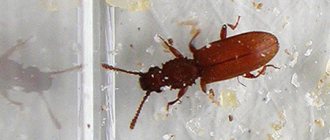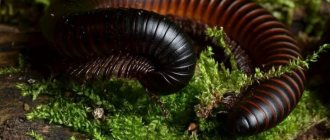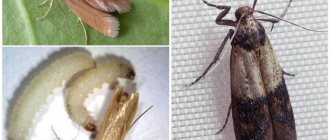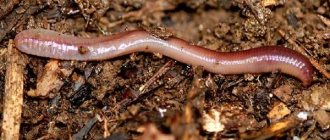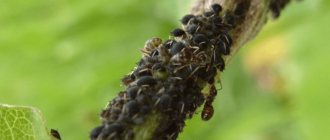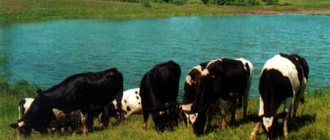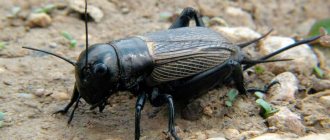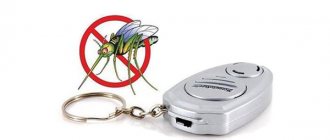Many of us have noticed how many earthworms appear after rainstorms. Few people pay attention to this, but they are literally everywhere: on the road, on the sidewalk, in puddles. However, even the most curious urban naturalist did not think about why this was happening, believing that he knew the answer. This is probably one of the first lessons we learn in school and pass on to our children: earthworms come to the surface after rain because the rain floods their holes and they drown. But is this statement true?
The truth about drowning worms
Conventional high school biology says that earthworms come to the surface after rain because they can't breathe. This theory is still taught to schoolchildren, and you can also find many detailed explanations on the Internet. It is assumed that the worm trails and air holes underground are submerged in water, and the earthworms cannot breathe. Of course, this statement makes sense, however, most researchers dispute this explanation.
As Chris Lowe, a researcher at the University of Central Lancashire, points out in Scientific American, earthworms breathe through their skin and require moisture to do so.
Humans drown when their lungs fill with water, but this cannot happen to earthworms because they do not have lungs. Numerous studies have also shown that most species of earthworms can survive being submerged in water for two weeks or more.
Mars may hide large amounts of water beneath its surface
Scientists have proposed the smell of happiness in “bottles” for the treatment of depression and phobias
The number of beauty salons in major cities decreased by 10% over the year
Recently, most popular scientific publications have debunked the myth of “drowning worms.” Although, maybe we shouldn't rule out this theory completely. For example, research published in the journal Invertebrate Biology showed that the behavior of worms after rain depends on their species.
Worms come out to settle after the rain
However, why do worms do this? Zoologist Christopher Lowe from the University of Central Lancashire (UK) believes that they use the rain to make long journeys. He calculated how much energy these creatures spend crawling a distance of one meter along the surface of the earth and in the soil. It turned out that crawling on the ground was more profitable - the energy required was five times less than when the worm squeezed between soil lumps. Well, since earthworms do not like dry air, they prefer to settle in damp weather.
However, Professor Joseph Gorris from the University of Vermont (USA) does not agree with the conclusions of his colleague. In his opinion, this behavior of worms is forced, but it is not water that forces them to crawl to the surface, but... fear of moles! The zoologist believes that these creatures perceive the sound of rain as the approach of an underground predator, which is their enemy (contrary to what is written about the mole in fairy tales, this animal is not a vegetarian at all, but an exceptional meat eater, and it is worms that are the basis of its diet).
Oxygen starvation
Taiwanese researchers, in turn, analyzed two species of earthworms with different life histories. One species consumed more oxygen at night than during the day, while the other consumed equally less oxygen over the entire 24-hour period. Species of worms that consumed more oxygen at night did not tolerate immersion in water well. Therefore, it was at night, when they needed oxygen most, that the creeping creatures were especially intolerant of rain and came to the surface. At the same time, worms of the second type never came to the surface, even during rain. Their constant low oxygen consumption allowed them to better withstand being submerged in water.
This is why it is quite appropriate to explain that the earthworms you see on sidewalks and streets need more oxygen. But many researchers still doubt the completeness of this theory.
Passionate kisses in the Dominican Republic: Jennifer Lopez and Alex Rodriguez spotted together
Digitization of feelings and emotions: Max Barskikh and Zivert presented a new video
Sofia Ernst built an excellent career, but at its dawn she often quarreled with her husband
However, it is not safe for many hundreds of earthworms to stay in the box for more than an hour.
For longer storage time, you need to put them in a plastic bag or boxes with soil or turf in an amount 5-10 times greater than the mass of the collected animals.
Friends, bloggers, even if you do not yet have the opportunity or desire to engage in vermicultivation in practice, you can provide invaluable assistance in promoting the topic of environmentally saving the planet from garbage with the help of “Earth Angels” - all you need to do is click on the social network buttons.
Health and prosperity to you! Best regards, Victor Dulin.
PS Who is interested in my almost daily bike rides on Vee Värk, with many videos and the number of rescued migrants, please look at the table at the bottom of this page .
To home
Raindrops sound like moles
We present to your attention another common explanation for the appearance of worms on the surface. The rain is supposed to sound like a predator, so the worms come to the surface to escape. Moles are common predators that prey on earthworms. During the hunt, they create vibrations in the soil, the worms sense danger and retreat by fleeing outside.
In the Appalachian region and some other areas there is a tradition called worm racing. This manipulation involves creating vibrations on the soil surface using a saw or stick. This method allows you to lure the worms out and then collect them for your needs, for example, fish bait. Essentially, people imitate the sounds of mole hunters.
The theory of predatory escape suggests that the stream of raindrops is also similar to the sound created by moles. University of Wisconsin professor Thea Whitman notes that this theory has never been demonstrated in laboratory tests. This always seemed to the professor an unconvincing argument. In the end, worms also appear after prolonged precipitation in the form of misty rain, which does not hit the ground with such force.
Lack of oxygen
One of the theories explaining why earthworms crawl to the surface after rain suggests that the animals do not have enough air. The tunnels through which they move are filled with water. Thus, the worms find themselves in a situation where going outside into an environment full of danger is still preferable to remaining to die in the water-filled tunnels.
It's not all worms
If worms are dying due to moisture or fleeing from predators, you can expect a wide cross-section of the worm population. But this doesn't happen. After a rainstorm, not all worms of this species come to the surface.
“The first solo performance ended in tears”: memories of Valery Leontyev
You don’t always need to be demanding: the child will start doing evil and not only
Leo and Libra: the most similar zodiac signs
Scientist Phil Nixon of the University of Illinois explained that if other driving factors were present, large numbers of young worms would also be present on the surface. However, the vast majority are adult red worms with the occasional adult nocturnal critter. When worms come to the surface using electricity or chemicals, many more of them appear. So it is clear that only a small percentage of adult red worms emerge during heavy rainfall.
Just think about what is happening. You don't see baby earthworms in your backyard when it's wet. If they faced certain death, they would certainly be there with all the adults. That is why we can believe that something else is happening besides all the above theories.
Group interaction
Earthworms crawl out to form groups. Communication occurs through tactile contact: they touch each other while crawling together. This peculiarity of interaction between earthworms became known only recently. For a group of scientists observing the creatures, this was a big discovery.
Rain is an amazing phenomenon in nature. In addition to the fact that it irrigates the surface of the Earth with moisture, after it there is a pleasant smell of ozone in the air - this phenomenon is called “petrichor”. It is not known exactly why earthworms begin to crawl out of their homes during rain, so each of the theories presented above has a right to exist.
Movement speed
Many earthworm and soil experts agreed with a version of this explanation: movement through soil is relatively slow and difficult, even for earthworms. They can cover a lot more ground on the surface, but the problem is that the earthworms need to stay moist. Therefore, if earthworms were above ground most of the time, they would simply become dehydrated. And when it rains, the surface is wet enough for the worms to stay hydrated and survive.
For some earthworms, this may simply be a means of transportation. This way they can move to new territory more easily. On the surface, worms can migrate much longer distances than underground.
Of course, going to the surface poses considerable danger. Earthworms are easy prey for birds and other predators. In our urban and suburban world, they also become trapped on city streets. But most worms survive. They move across the lawn or park and burrow into the soil without any problems.
Found a violation? Report content
Worms leave their shelter due to falling temperatures
Earthworm.
As you know, earthworms are heat-loving creatures and a comfortable air temperature for them is considered to be 15-25 degrees Celsius.
After precipitation, the temperature of the sun-warmed soil can usually drop by several degrees. This fact has given rise to the theory that the worms become uncomfortable in such conditions and crawl out of their holes to keep warm.
To survive, humanity will have to return the earthworm to the field
Earthworms are large soil invertebrate animals, the most ancient and numerous on Earth. Worms are an important part of soil biota and are found throughout the world.
They live on all continents except Antarctica. According to Dogel (1975), they belong to the rain family (Lumbricidae), the order of higher oligochaetes (Lumbricomorpha), the class of oligochaetes (Oligochaeta), the subphylum clitellata, the phylum annelidae (Annelida), the subkingdom metazoans , the animal kingdom. The total biomass of earthworms is greater than the biomass of all living creatures on our planet. There are more than 1,500 species on Earth, 35 species are common in Europe, and about 100 in the former USSR. The common night crawling earthworm (Lumbricus terrestries) and the dung worm (Eisenia fetida) are probably the most famous species. All other species of earthworms are biologically similar to them, with the exception of certain characteristics.
Small earthworms reach a length of 1-2 cm, medium ones - 10-20 cm, while for the giant worm Megacolices australis (Australia) a length of up to 3 meters with a diameter of 2.5 cm has been recorded.
Earthworms differ not only in families, genera and species, but also in types of food and habitat in the soil:
- feeding on organic matter on the soil surface, among them:
- surface-dwelling, living in the ground litter of fallen leaves, dead grass, half-rotten branches, as well as in composts,
- digging deep holes (up to a meter or more),
- feeding on soil humus or the soil itself, among them:
- living in the upper part of the soil,
- living at medium depths (20-40 cm),
- burrowers living in deep layers of soil (Lumbricus terrestries, Dendroboena platura).
- There are also amphibian worms.
Thus, the root systems of plants in living soil are located in the layer that is the natural habitat of earthworms (drillosphere). Scientists have proven that the soil adjacent to the hole left by the worm is populated by microorganisms to a layer thickness of about 2 mm. And the inner surface of the passages in living soil (at the entire feeding depth of earthworms ) can be 5 m2 per 1 m2 of soil surface.
As for the depth of their penetration, a thick and surprisingly strong worm , whose passages pierce the ground to a depth of eight meters.
Worms inhabit all layers of the soil. Therefore, all dead plant organic matter passes through their intestines more than once and itself turns into soil thanks to the amazing properties of earthworms .
Earthworms can feed on any food containing organic matter. They can eat fallen leaves, dead herbaceous plants, rotted manure and the soil itself. By digesting dead plant organic matter, they transform it into small soil lumps. These earthworm are called coprolites (from the ancient Greek “κοπροζ” (droppings) and “λίθοζ” (stone)).
Coprolites of natural worm populations contain 11–15% humus per dry matter. Due to the mucus that envelops them, they are durable and water does not wash them away, but only wets them and seeps further into the soil. Coprolites contain increased amounts of nitrogen, phosphorus and potassium. Worms transfer these elements necessary for plants from an inaccessible form to an accessible one. During the digestion of plant residues, humic substances are formed in the digestive tract of worms . They differ in chemical composition from humus formed in the soil with the participation of microflora in that in the digestive canal of worms the processes of polymerization of low-molecular-weight decay products of organic substances develop and molecules of humic acids are formed. These acids enter into complex compounds with the mineral components of the soil, forming stable aggregates that remain in the soil for a long time. In this way, worms create loose, fertile soil saturated with air, moisture and nutrients available to plants.
There are no more powerful humus formers in nature. It is not yet possible to create humus and restore soil fertility in other ways.
Over the past two decades, their main merit has been proven not only in the formation of fertile soil, but also in its neutralization from pathogenic flora and many toxic substances, including radionuclides and heavy metals. Having passed through the intestines of any worm , all this pathogenic flora (bacteria, algae, fungi with their spores, protozoa of the animal world, including nematodes) is destroyed, and radionuclides and heavy metals are converted into insoluble compounds inaccessible to plants and they are already safe , remain in the soil for eternal storage. At the same time, the organic mass processed by the worms loses its odor, takes on the form of granules and a pleasant smell of earth. These are real deodorizers and sanitary workers, soil improvers. No one and nothing can compare with earthworms The more earthworms in the soil, the healthier and more functional it is, the more humus it contains - the most valuable and most necessary fertilizer for it.
One hectare of soil not ruined by chemicals and plowing can contain from 1 to 200 million earthworms , and the weight of biomass ranges from 2 to 10 tons per hectare, i.e. 10 times more than all land animals in the same area. If earthworms , then on a hectare of well-groomed pasture the scales will tip in their direction, even if on the opposite side there is an entire herd of cows grazing in the meadow. If we take into account that a worm passes through its body per day an amount of soil equal to its weight, then with an average weight of a worm of half a gram and their number is 100 pieces. / sq. m (i.e. 1 million per hectare), it turns out that per day they pass through themselves 50 g of earth per square meter. Taking into account the fact that the activity of the worm in the middle zone is 200 days a year, then during the season this figure increases to 10 kg / sq. m. or 100 t/ha – no comments needed!!! And this is with a minimum number of them...
As a matter of fact, only thanks to the multimillion-year activity of thousands of different species of worms , soil appeared on our mother Earth, neutralized from the products of volcanic eruptions, fires, and natural radioactivity. Earthworms this kind of work on land all over the globe, and no one can replace them in this role.
Earthworms do not get sick and are not subject to any epidemics.
Ultraviolet radiation from the sun is harmful to earthworms . Therefore, twilight and darkness are their constant companions. Many enemies have taught them to be extremely cautious and timid. The soil is their home. Some species hardly appear on the surface. Others do this often, but only at night, remaining in their burrows during the day. Climbing up, the earthworm is securely secured by its tail bristles in the burrow, so that in case of danger it can instantly be drawn into it. The front part of its body is capable of stretching into a thin sensitive proboscis. With it, the worm carefully probes the space around itself. Earthworms can move (at night and during rain during the day) quite long distances not only along the horizontal surface of the soil, but also along vertical obstacles up to several meters high, at a speed of up to 1 meter per minute. But the rate of natural spread of earthworms is only a meter per year.
Earthworms do not reproduce quickly. Those with red pigmentation lay no more than a hundred cocoons per year, and the 30-centimeter inhabitant of the soil, popularly called a crawler, lays even less - 40 cocoons. The life span of a crawl is also short - 5...6 years.
In 1985, near the city of Bass (Australia), John Matthews created the Museum - an attraction for the giant earthworm (as it is called in Australia). This worm can reach 3-4 m long! It is the largest invertebrate in the world. A museum to match a worm: a huge 100-meter building in the shape of an earthworm. In this Museum you can travel through the worm's passages and inside the worm itself. Not only to literally come face to face with the largest known animal living in the mysterious underground world, but also to get to know it from the inside.
Charles Darwin established that “ earthworms pass through the entire arable layer of soil in a few years (they passed through them in Darwin’s time). They enrich depleted lands with fresh humus, loosen them, and at the same time fertilize them with their secretions. Burrowing in the ground and swallowing it, they create a strong lumpy “soil-air” structure, and moisture better penetrates to depth. Countless worm holes, like a capillary network of living tissue, provide ideal drainage and ventilation of the soil.”
His work, “The Formation of the Vegetative Layer by the Activity of Earthworms,” is one of the most interesting and significant in natural history.
How do worms and do they have teeth? Figure 1 shows a fragment of an earthworm device.
| Rice. 1. Structure (fragment) of an earthworm. |
The pharynx is an organ for absorbing food, working on the principle of a rubber bulb: when compressed and then unclenched, a vacuum is created, due to which food is drawn inside.
It is clear that there are no teeth in the mouth, so the worm is not able to gnaw or bite. In addition, the food must be sufficiently soaked or softened so that it can pass through a fairly modest-sized mouth opening. Therefore, plant food (shoots, leaves) should not be freshly picked (or freshly bitten), but already dried, with softened fibers. That’s why earthworms love to live and feed so much in half-rotted humus, under last year’s fallen leaves, in mowed or cut vegetation that has lain for quite a long time on the surface of the soil.
A goiter is a large thin-walled cavity in which swallowed (absorbed) food accumulates. But what happens to her next? And how can we manage without teeth? There is no need to doubt: the worm has teeth, but they are located in the stomach.
The stomach is a muscular, thick-walled chamber, the inner surface of which consists of hard, tooth-like projections. When the walls of the stomach contract, they crush (gnaw, chew, grind) food into small particles. And already in this state, food enters the intestines, where it is digested under the action of digestive enzymes, and the nutrients released are absorbed. By the way, the stomach of crocodiles and most birds is structured in a similar way.
The peculiarities of digestion make earthworms detritivorous, i.e. they feed on detritus - decaying plant organic matter found on the surface of the earth or in their underground burrows, as well as in the soil itself, in contact with the soil itself. the earthworm leaves behind are lumps of soil enriched with nitrogen, microelements, and having low acidity due to the alkaline environment of its intestines.
The earthworm has an “Achilles heel” (each of us has a weak spot...). The problem is that a worm requires energy to live. And he gets it through respiration (and oxygen oxidation), and this requires gas exchange between the body and the environment. The worm does not have a special organ for gas exchange (lungs, gills, etc.), so it breathes through the skin. To do this, it must be very thin and constantly moisturized.
The lack of a protective shell leads to the fact that the most common reason for their natural death is drying out.
The body of earthworms consists of many ring-shaped segments (from 80 to 300), which are easy to see.
If necessary, the body of the worm is covered with abundant mucus, which serves as an excellent lubricant for squeezing through the ground. The same mucus prevents the body from wasting water, of which there is a lot in the worm - about 80% of the total weight.
Under certain conditions, worms can restore missing body parts. For example, the back part will grow back if it is torn off in an accident. However, not always.
Worms , awakened from hibernation, enter the mating season and begin to lay cocoons (one cocoon approximately once a week) for 3 months. The young reach sexual maturity in the fall, when hibernation time is already approaching; In winter, some young worms may die.
Earthworms are skilled and fast builders of passages and chambers in the soil.
Worm burrows in the soil can be one-time or permanent. Disposable ones are laid in loose soil, where it is easy to squeeze between lumps in any direction. Constant passages forming a system of burrows dig in both loose and dense soil. In the latter , the worm swallows the earth and passes it through itself.
Worm tunneling increases soil aeration, soil water infiltration, nitrogen availability to plants, and soil microbial activity. It has been established that by drilling the soil with worms, the number of nitrifying bacteria increases. The increased amount of nitrogen found in the drilosphere may be one of the reasons for the growth of roots in the channels made by worms . Earthworm tunnels can remain unchanged for decades, which helps to increase the density of plant roots, stabilize soil aggregates and reduce the likelihood of soil erosion. Moving tail forward, it reaches the surface or cavity in the soil, where it deposits soil in the form of coprolites. Then he returns, swallows the next portion and everything repeats. Not all types of worms can master dense soil. Many always remain in the loose layer and do not tolerate its artificial compaction well. This must always be remembered when organizing the movement of machines across the field. Worm tunnels play a huge role in the life of plants, because they supply oxygen to the living soil.
For optimal root growth, the soil needs to contain 10-15% air. If the soil is compacted, the consequence will be a decrease in yield. In compacted layers after precipitation, as a rule, moisture accumulates, which leads to oxygen deficiency in the root zone. Oxygen is a necessary energy supplier for the absorption and transport of nutrients. If there is a lack of oxygen, problems arise with the absorption of potassium, calcium, magnesium, phosphorus and iron, and the transport of these ions into the plant becomes much more difficult.
An important role in this is played by the activity of earthworms , whose activity is manifested in the supply of a sufficient amount of organic biomass. In the course of their life, worms make passages through which the roots of cultivated plants can then grow. In this way, the deep growth of the root system and its branching are supported.
Worms need moist soil to live so that it does not suck the moisture out of them. For people who constantly work with soil, the skin on their hands dries and cracks. The worms are not in any better position. Although their body is protected by constantly secreted moisturizing mucus, in dry soil there is nowhere to get moisture for its formation. If there is not enough water, the worms go deeper into wetter layers of soil or fall asleep (enter diapause). They build chambers for this purpose and conveniently roll them up into pretzels or tie them in intricate knots, hiding their “noses” and tails inside the rings.
Chambers in the soil are built by worms both to wait out drought and for wintering. The chambers of shallow-living worms can be found at a depth of 20-30 cm, and those that dig deep holes can be found at a depth of 50-70 cm. They also occur at a depth of two meters. Worms often wait out drought and winter in twos or in groups.
The enemies of earthworms are birds that eat them, arthropods and their larvae, toads, frogs, newts, moles, hedgehogs, shrews, badgers, raccoon dogs, foxes, fish, wild boars.
How many years do earthworms ? Little is known about this. There is evidence that no more than 10 years. However, in nature, few worms manage to live for so long - their living conditions are very difficult. Sudden changes in temperature and soil moisture lead to mass death of these animals. Numerous enemies lie in wait everywhere: worms are a very nutritious food, and they have no weapon of defense other than the ability to quickly hide in a hole.
However, enemy No. 1 for worms is an unreasonable person and his illiteracy in soil science.
The first blow is dealt by repeated deep, up to 35 cm, plowing and digging of the soil, turning over the layer and destroying all living things. But the conditions of arable land are especially difficult for worms . In hot weather, unshaded, plowed soil easily heats up and dries out, and the worms die. In the spring, tractors turn up the earth with worms for the birds to eat. In late autumn, the minks are opened, when the worms have already settled down for the winter.
But the man does not calm down, as if he is purposefully waging a war to destroy his assistant and friend.
On arable land, where people take the entire harvest, where the soil structure is destroyed by heavy machines and nutrients in the form of crop residues are briquetted and burned in the fireplaces of “successful” people, worms are doomed to extinction.
People treat crops with chemical fertilizers and pesticides. This leads to massive death of earthworms and other soil fauna, without which arable land is dead. However, we must not forget: if you apply fertilizer to arable land where worms have been destroyed by humans, this will not give the desired effect. This can be observed by the reduction in the use of basic fertilizers by plants under arable and soil conservation technologies. Thus, arable technology uses 28% nitrogen, 20% phosphorus and 32% potassium, and soil conservation technology uses 50, 20 and 50%, respectively. There will be no one to turn the fertilizer into soil. worms no longer live , consists of dense blocks, which, even after harrowing, are broken into pieces that are more reminiscent of shale than clods of earth. The soil inside them is dense, drained, without any signs of life. There are no passages or coprolites.
Such activities lead to the mass death of great workers.
In the old days, peasants judged the fertility of the soil by the number of red worms living on the plot. When cultivating the land, worms ; they knew where there were more of them, the harvest of vegetables, berries and fruits would be richer, and the products would be tastier. The work of underground plowmen - earthworms - is still highly valued by experienced farmers today.
Nowadays, after the boom in agricultural chemicalization, people are turning to agriculture based on attention to the inhabitants of the soil and their role in its creation. If nature intended for the worm to loosen, fertilize and treat the soil, then returning them to the fields will save a lot of problems.
It is clear that no-till technology is the way to return the earthworm to the field , and “aerobatics” for the agronomist is the transition to no-till technology, which will be discussed in the next section.
No-till is the green light for the earthworm to return to the field, because moisture, which is so important for the skin of the “earth angels,” is retained under the mulch; the soil is protected from overheating, weathering, and freezing. The lower, decomposing layer of mulch is a wonderful dining room for worms .
But switching to no-till is not very easy, and if, if necessary, the agronomist decides to loosen the soil, then the treatment should be no deeper than 5 cm! This will preserve the structure created by the worms , their passages and holes. And after a while you will be surprised at how deep your soil will become light and fluffy without any cultivation.
The experience of agronomists who switched to no-till ten or more years ago shows that the chemical load on the soil is significantly reduced. Saving plants with chemicals is the same as being treated with pills: it removes the symptoms, but does not eliminate the cause... Weakened plants grow in sick soil, susceptible to diseases and pests. It makes more sense to improve the soil, and worms will do this best of all, simultaneously enriching it with vermicompost. Well, if soil fertility does not decrease, but increases every year, then chemistry may be needed only in emergency cases.
Vermicompost.
One would like to say that “a real agronomist is one who has a good sense of humus.” It has been established that the application of 6 t/ha of vermicompost to the soil is equivalent in its effect on productivity to the application of peat manure compost in the amount of 60 t/ha!
Vermicompost is a product of the processing by earthworms . It is a loose, finely granulated mass with granule sizes of 1-3 mm.
Properties of vermicompost.
Since vermicompost contains a large amount (up to 32% by dry weight) of humic substances - humic acids, fulvic acids and humins - this gives this organic fertilizer high agrochemical and growth-stimulating properties. All nutrients are found in it in a balanced combination, worked out by nature itself, and in a form available to the plant. In terms of the content of basic plant nutrients, vermicompost surpasses all known organic fertilizers.
Worms increase the absorption of potassium, phosphorus, and microelements by plants. For example, the nitrogen released by worms is absorbed by plants by more than 95%, while nitrogen from fertilizers is only 30-40%.
Vermicompost is also a microbiological fertilizer; it contains a unique community of microorganisms that create soil fertility. It does not contain pathogenic microorganisms, helminth eggs, weed seeds and heavy metals. Moreover, it contains a unique community of microorganisms beneficial to the soil and plants, which, when vermicompost enters the soil, populate it, secrete phytohormones, antibiotics, fungicidal and bactericidal compounds, which leads to the displacement of pathogenic microflora. All this ultimately improves the soil health and eliminates many common plant diseases.
In addition, vermicompost has exceptional physical and chemical properties: water strength of the structure (95-97%) and complete moisture capacity (200-250%). This allows us to consider it as an excellent ameliorant and soil improver.
Vermicompost is especially effective in protected soil.
The effectiveness of vermicompost.
- vermicompost quickly restores the natural fertility of the soil, improves its structure and health;
- vermicompost does not have an inert action: plants and seeds immediately react to it;
- vermicompost is a long-acting organic fertilizer: its effectiveness remains for 4-7 years;
- vermicompost reduces the germination time of seeds and increases their germination rate, accelerates the growth and flowering of plants, and shortens the ripening time;
- vermicompost provides strong immunity to plants, increasing their resistance to stressful situations, adverse weather conditions, bacterial and putrefactive diseases;
- vermicompost binds heavy metals and radionuclides in the soil and prevents plants from accumulating nitrates;
- vermicompost provides a stable, high, environmentally friendly harvest.
In the soils of Ukraine, the humus content varies in different zones, but the range of its content is from 0.8 to 6.5%. The thickness can range from 10-15 cm to 1 meter or more. The main source of humus is the aboveground part of plants and their roots, which are amenable to humification. The processes of humification are complex, their speed and nature depend on many soil and climatic conditions, the composition of vegetation, the microbial and animal world of the soil, as well as on economic activities.
Ukraine has a huge reserve of fertile soil. 60% of all lands are chernozems, this share of the world's areas is 6.7%. A hundred years ago, the black soils of Ukraine contained 4-6% humus, today – 3.2%. The formation of humus is a long process. An increase in its content in the soil by 1% occurs in 300-400 years. It turns out that in a hundred years we have lost the proportion of humus in the soil that had accumulated for more than 1000 years.
If there is less humus in the soil than 2.5%, then it is not black soil.
Area of chernozems in different countries (case No. 2).
| A country | Area of chernozems (million hectares) | Share of world area (%) |
| Ukraine | 26,56 | 6,7 |
| Russia | 145,36 | 36,9 |
| Kazakhstan | 16,56 | 4,2 |
| Moldova | 2,02 | 0,6 |
| 190.5 million hectares | 48,4 | |
| Bulgaria | ||
| Romania | ||
| Hungary | ||
| Czech | ||
| Slovakia | ||
| Germany | ||
| China | ||
| USA | ||
| Argentina | ||
| Uruguay | ||
| 203.1 million hectares | 61,6% |
Moreover, the quality of the chernozems of the listed countries is inferior in the amount of humus to the chernozems of Ukraine.
Today, the annual decrease in the proportion of humus in the fields of Ukraine is 500-700 kg per hectare. The application of mineral fertilizers breaks down humus, and this leads to a decrease in its content in the soil. The most “aggressive” are nitrogen, some types of potassium and complex fertilizers.
Humus is also called the soil's immune system, since it maintains basic functions and ensures the health of the soil environment. Humus activates the natural defense of plants against diseases and pests. Harmful substances (pesticide residues, heavy metal salts, radionuclides, toxicants, etc.) decompose or are deactivated in colloids and do not pose a danger to soil fauna and plants. Humus plays an important ecological role for the entire living world (plants, animals and people). It absorbs and binds harmful substances like a sponge and therefore can be called a “buffer of the planet.”
Among the means that are aimed at ensuring a deficit-free balance of humus, stubble and root residues are important. Therefore, minimizing soil cultivation and growing green manure play a vital role in maintaining the level of humus, and in the future, increasing its proportion in the soil.
Humus is the plant’s bread; it accumulated in the soil (in our latitudes) throughout the post-glacial period. Stopping the decline in soil fertility, and, in the long term, its restoration lies through the return of the earthworm to the soil , which means abandoning the plow and a difficult but necessary path to direct sowing technology.
This is exactly what will be discussed in the next section.
Description
Earthworms or earthworms (lat. Lumbricina) are a suborder of oligochaete worms from the order Haplotaxida. They live on all continents except Antarctica, but only a few species initially had a wide range: the spread of a number of representatives occurred due to human introduction. The most famous European earthworms belong to the family Lumbricidae.
The body length of representatives of different species varies from 2 cm (genus Dichogaster) to 3 m (Megascolides australis). The number of segments is also variable: from 80 to 300. When moving, earthworms rely on short bristles located on each segment except the anterior one. The number of bristles varies from 8 to several dozen (in some tropical species).
The circulatory system of worms is closed, quite well developed, and the blood is red. Breathing is carried out through the skin, rich in sensitive cells, which is covered with protective mucus. The nervous system of earthworms consists of a poorly developed brain (two nerve ganglia) and an abdominal chain. They have a developed ability to regenerate.
Earthworms are hermaphrodites; each mature individual has a female and male reproductive system (synchronous hermaphroditism). They reproduce sexually using cross-fertilization. Reproduction occurs through cocoons, inside which the eggs are fertilized and develop. The cocoon occupies several anterior segments of the worm, standing out relative to the rest of the body. Small worms emerge from the cocoon after 2-4 weeks, and after 3-4 months they grow to the size of adults.
The food consumed by earthworms is first ground up in their throats and then passed into the intestines. Here the digestive process takes place with the help of enzymes. Some of the food is aimed at providing the worms with energy and promoting their growth. The rest of the food is excreted in the form of granules. The soluble nutrients in these pellets are more beneficial than the food the worms consume in the first place. These secretions are rich in calcium, magnesium, phosphorus and nitrogen.
In winter, earthworms hibernate. Due to the fact that frosts instantly kill earthworms, they prefer to burrow deeper into the ground, where frost does not penetrate. In the spring, when the temperature reaches a suitable level and the ground is saturated with rainwater, earthworms become very active. At this time, mating season begins for them.
They reproduce very quickly, producing about a hundred young worms per year. In summer, worms are not as active. There is very little food at this time, and the soil is deprived of moisture, which can cause the death of the worms. The autumn period is again characterized by worm activity. At this time, reproduction of offspring begins again, which lasts until the onset of winter.
Earthworms live relatively long. Some manage to live for about ten years if they do not become victims of birds and moles. Another threat to their life is the pesticides that are so widely used in gardening today. Some worms die due to extreme heat or frost. Worms can also die when the soil becomes dry or when there is not enough food. All these conditions shorten the lifespan of earthworms, which are the best helpers for gardeners.
Earthworm or earthworm.
